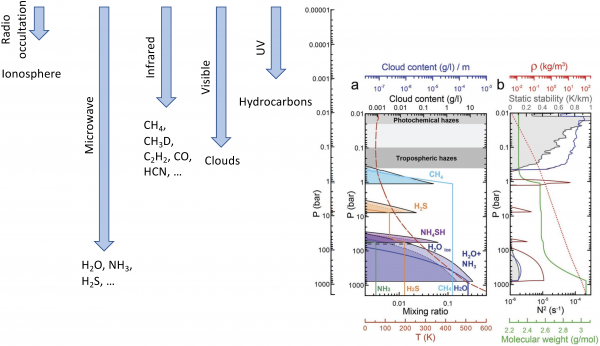Diversity of exospheres
The first step, and often the only step, in determining the chemical composition of Solar System planetary bodies and exoplanets is the observation of their atmospheres. Dense atmospheres, however, are impenetrable for spectroscopic observations. It is only the exosphere (i.e., the essentially collisionless part of the atmosphere) and the upper atmosphere (i.e., the quasi-collisional and the uppermost part of the collisional atmosphere) where spectroscopic observations can provide information on composition. Since the observable part of an atmosphere and the planetary surface often are intimately linked, the atmosphere’s chemical composition can be used to derive the chemical composition of the surface, and, ideally, the planetary body as a whole. To correctly derive information on the chemical composition of the underlying surface or the bulk atmosphere from measurements of the upper atmosphere and exosphere, a solid understanding of the relationship between the two is needed.
Determining this relationship between the observable part of the atmosphere and the underlying surface or the bulk atmosphere is exactly the goal of the atmosphere model that was developed at the University of Bern. The current model is being used for the interpretation of mostly spectroscopic observations of atmospheres of a diverse range of planetary bodies within our Solar System (Mercury, Venus, Moon, Mars, Jupiter’s moons, comets, asteroids) and for exoplanets. Moreover, the model allows for predictions of future observations (e.g. JUICE, Europa Clipper, IVO for Jupiter’s Galilean moons), both for spectroscopic and in situ measurements, for existing and proposed missions to solar system objects. In addition, depending on available planet data, also atmosphere observations of exoplanets can be modelled. Vice versa, once detailed atmospheric observations of exoplanets become available, the model can help to interpret the observed parameters (density, temperature, composition, atmospheric loss, etc.).
The current model, which allows simulating atmospheres where collisions are negligible (i.e., exospheres), will be extended to cover the entire atmosphere that is spectroscopically observable. The extended model will greatly improve our understanding of how the observable part of an atmosphere is connected to the underlying planet, its dense atmosphere or the planetary surface. Moreover, the extension also increases the range bodies that can be studied, considering the large diversity of observed solar system planetary bodies and exoplanets.

This figure shows the structure, chemical composition, and cloud levels in Uranus’ atmosphere (Mills et al., Space Sci. Rev., 2021), together with a rough indication of the depth of information of spectroscopic observations.

